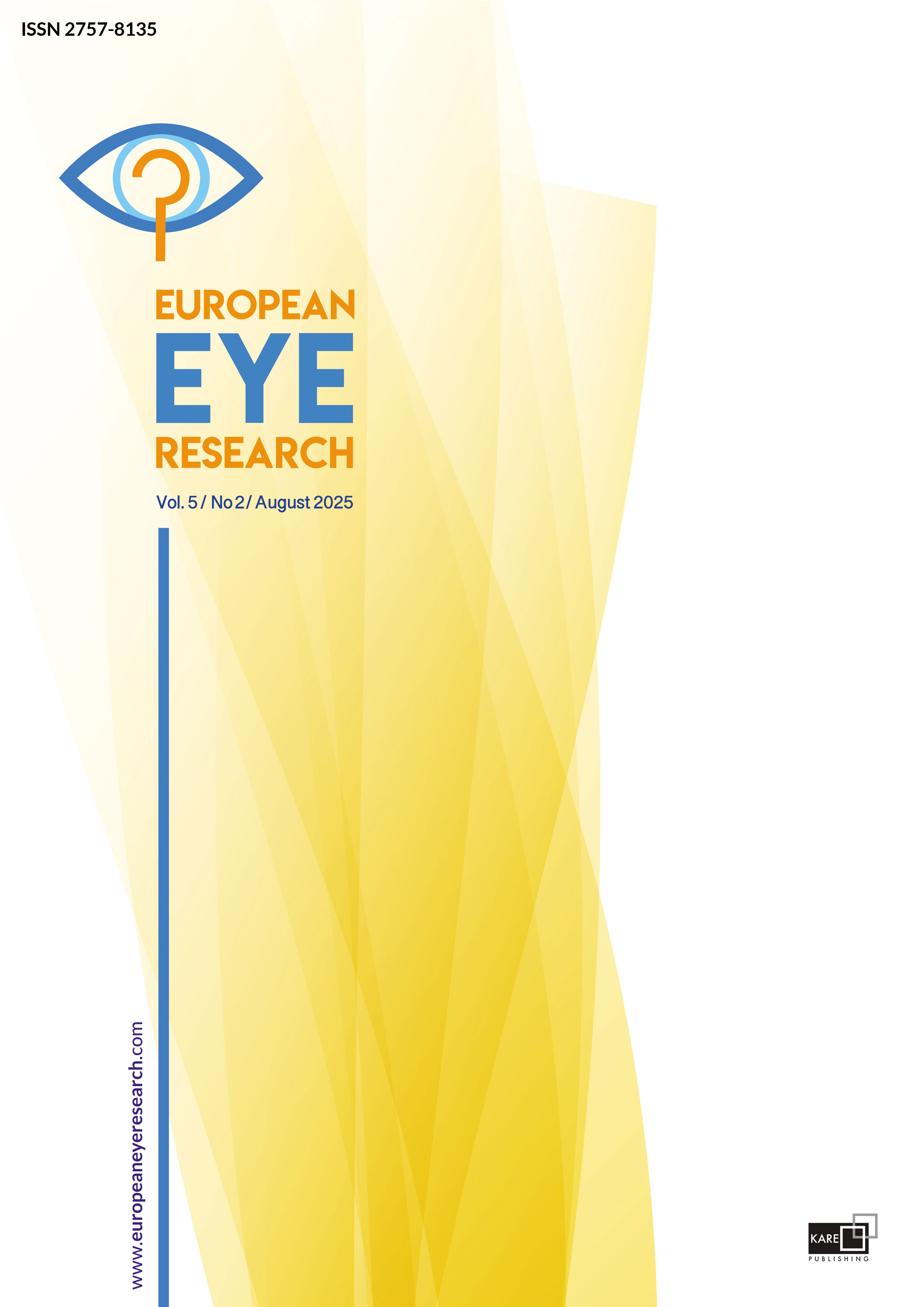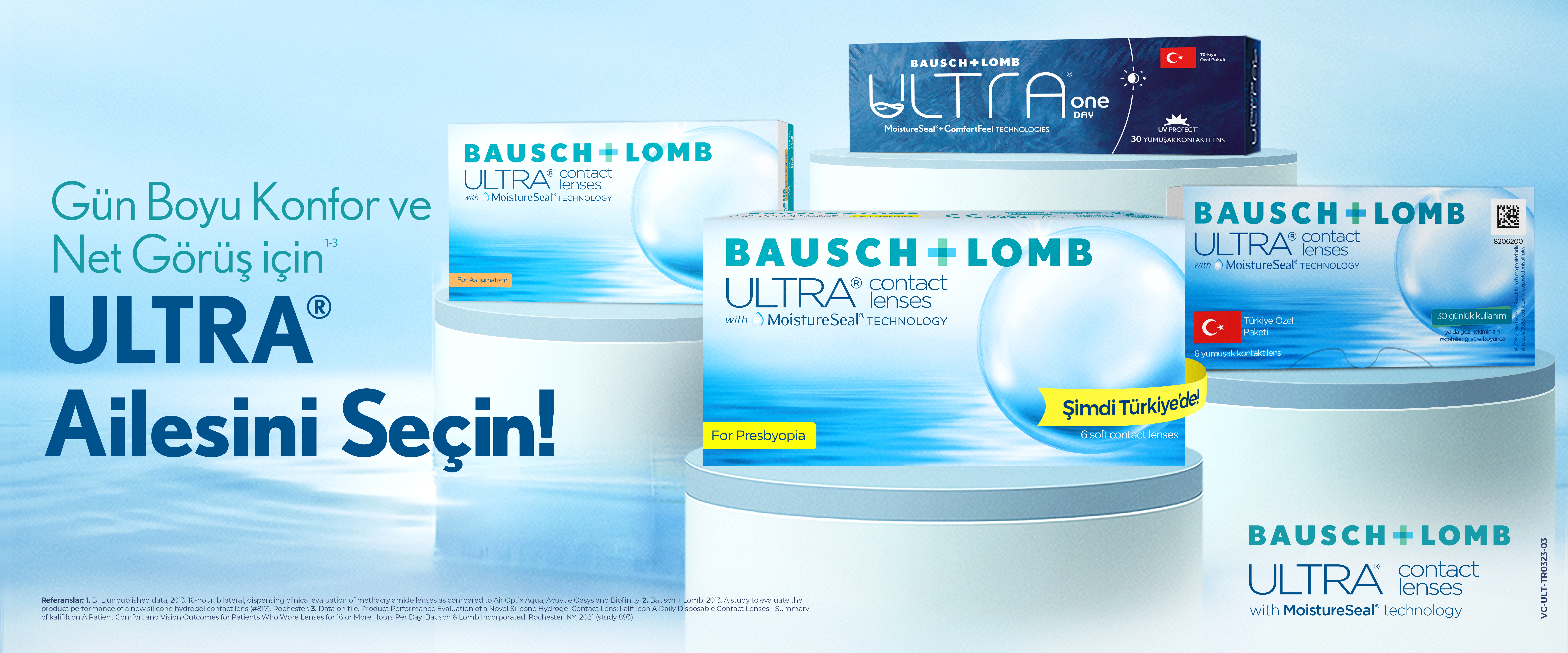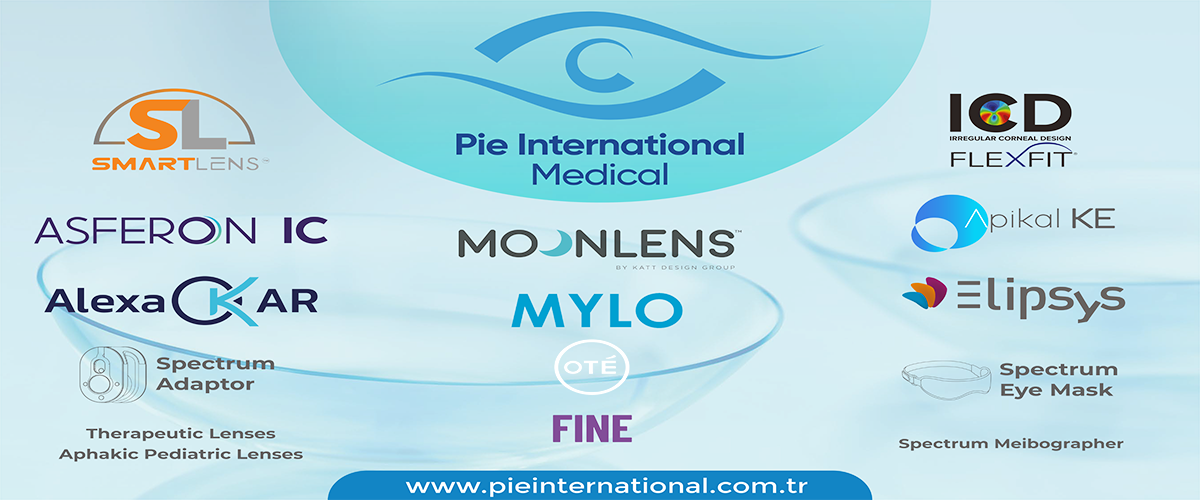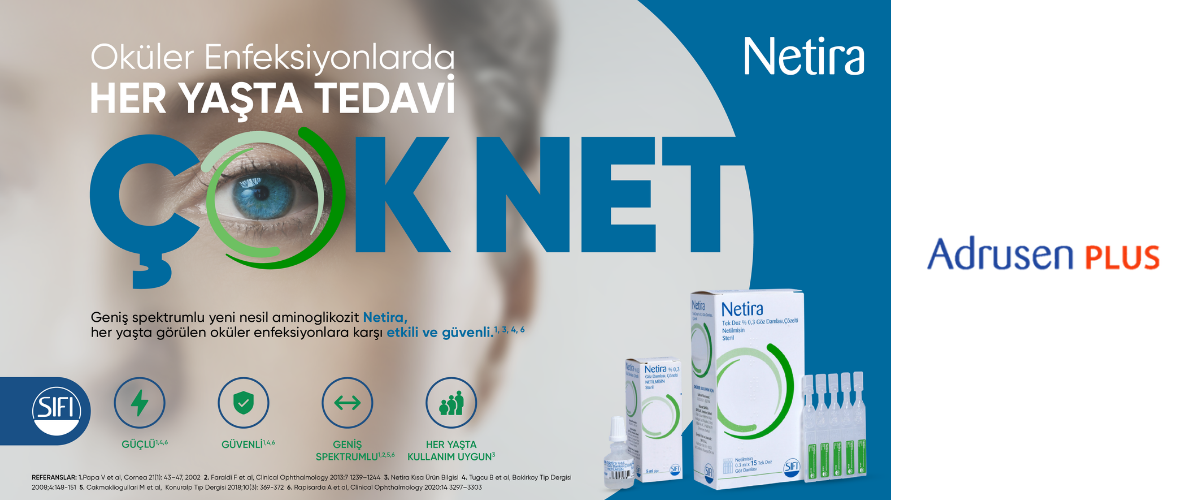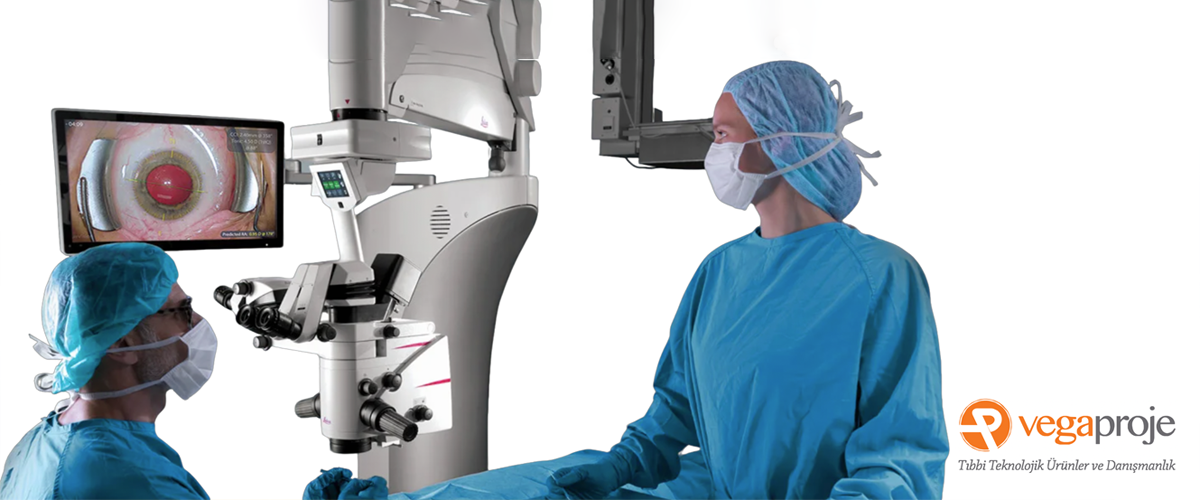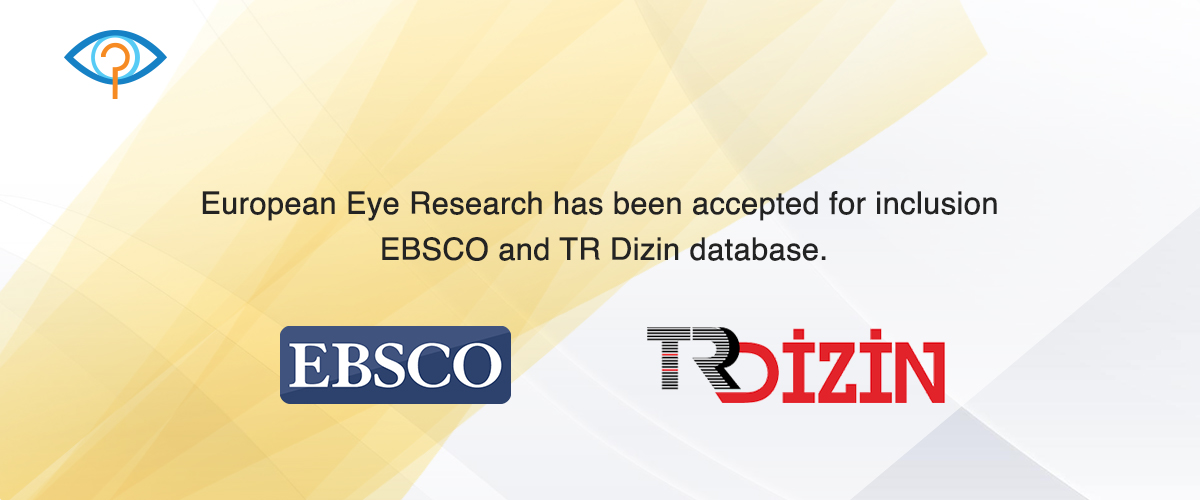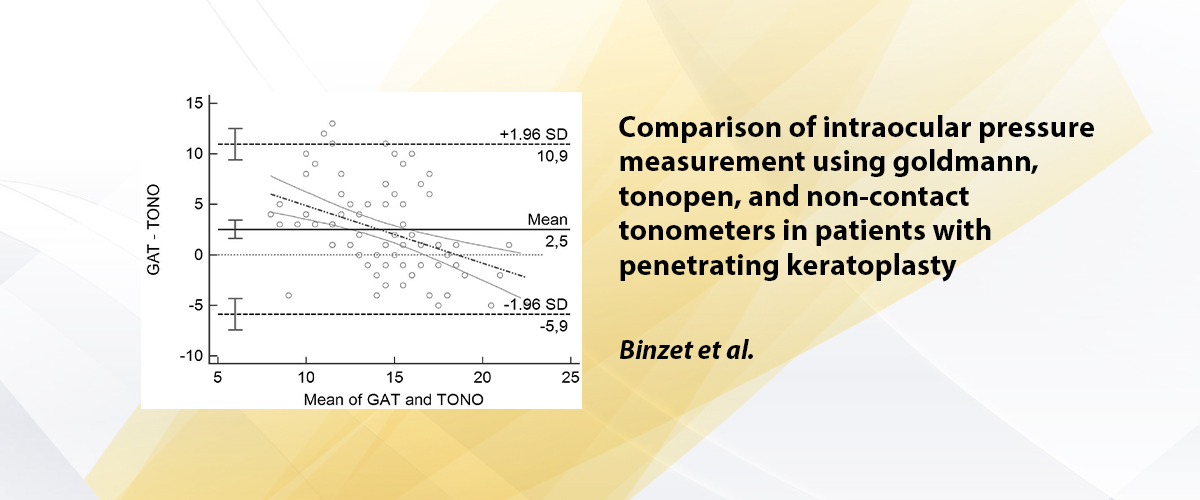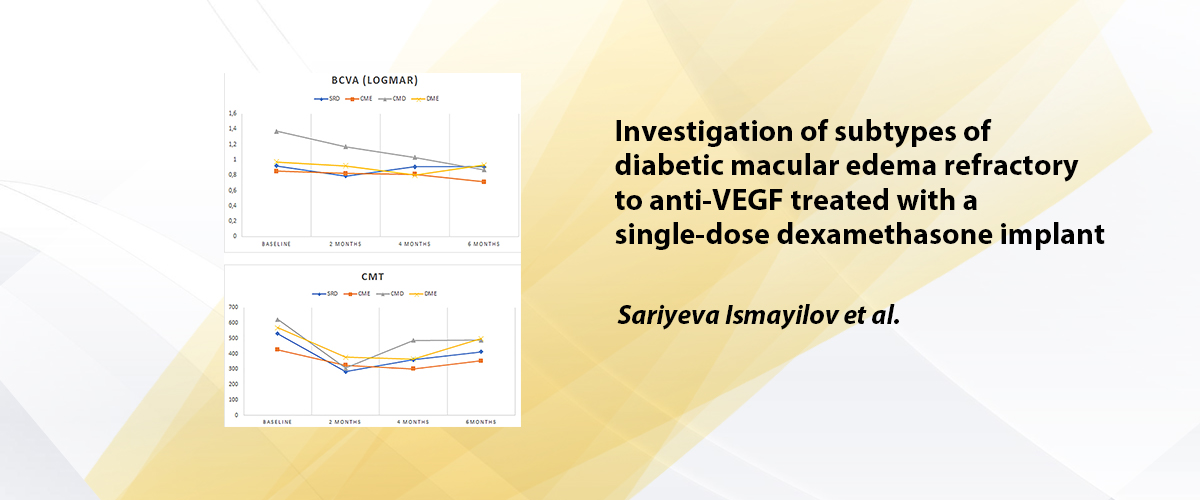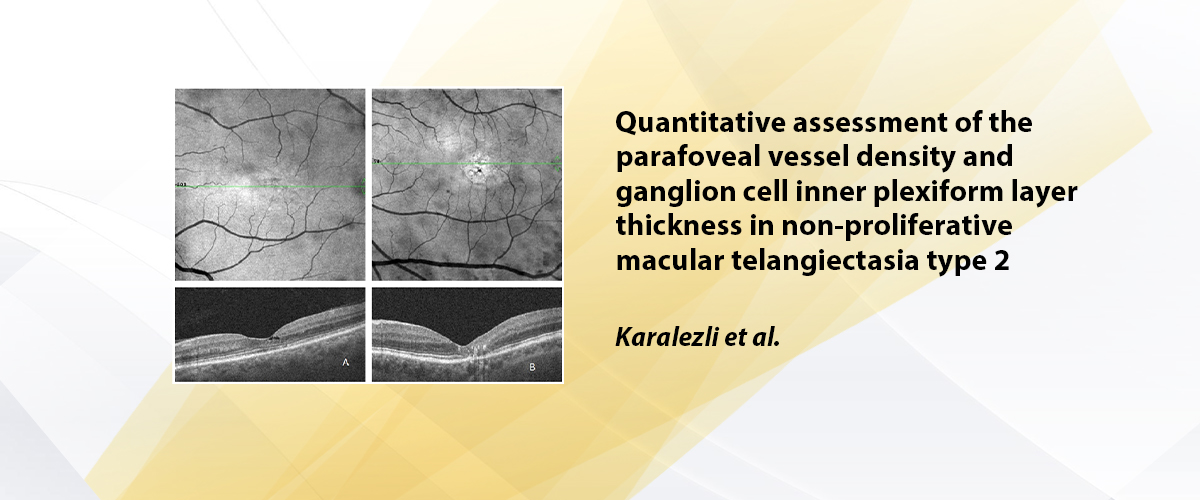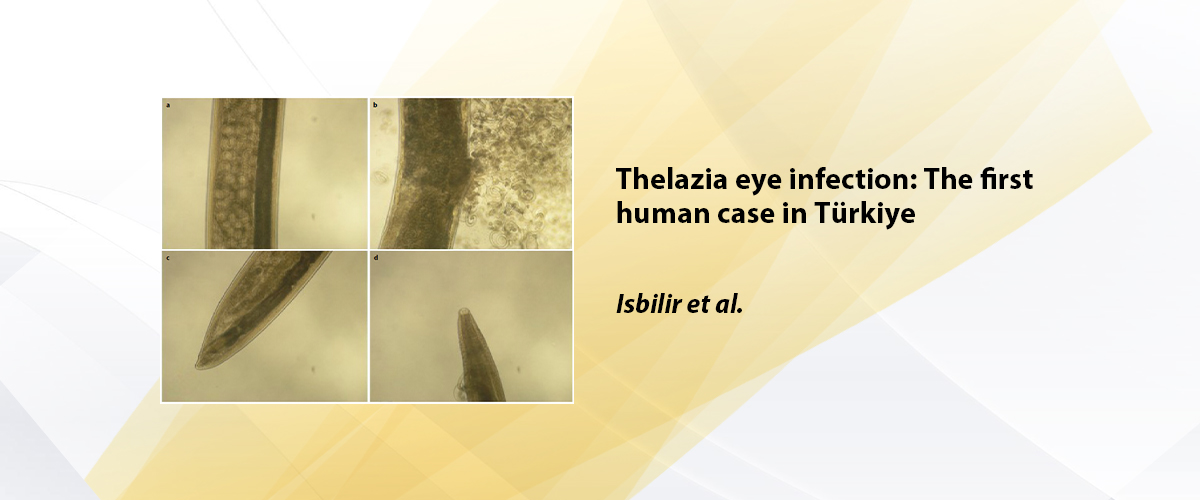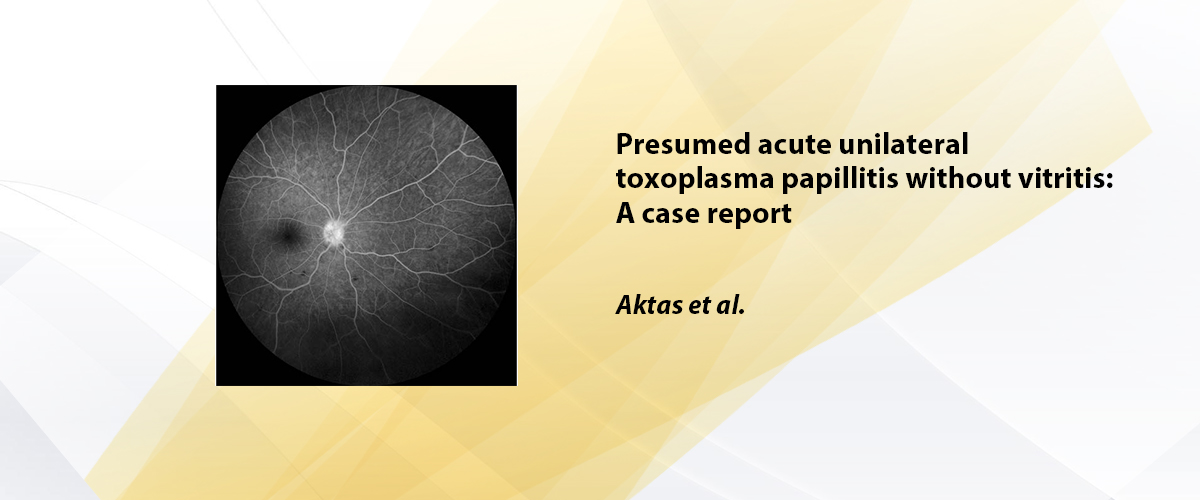

INFORMATION FOR THE AUTHORS
European Eye Research is an international, scientific, open access periodical published in accordance with independent, unbiased, and double-blind peer-review principles. Three issues are released every year in April, August, and December. The publication language of the journal is English.
European Eye Research aims to contribute to the international literature by publishing high-quality manuscripts in the field of ophthalmology. The target audience includes specialists and physicians-in-training in all branches of ophthalmology.
REVIEW PROCESS
Manuscripts submitted to European Eye Research will undergo a double-blind peer-review process. Each submission will be reviewed by at least two external, independent peer reviewers who are experts in the field in order to ensure an unbiased evaluation process. The editorial board will invite an external and independent editor to manage the evaluation process of manuscripts submitted by editors or by members of the editorial board. The editor is the final authority in the decision-making process for all submissions.
Reviewers who seek assistance from a trainee or colleague in the performance of a review should acknowledge these individuals' contributions in the written comments submitted to the editor. Reviewers must maintain the confidentiality of the manuscript, which may prohibit the uploading of the manuscript to software or other AI technologies where confidentiality cannot be assured. Reviewers must request permission from the journal prior to using AI technology to facilitate their review.
The review is typically completed within one month of submission to the journal. Authors will be sent constructive reviewer comments intended to be useful. In general, the instructions, objections, and requests made by the reviewers should be followed. The revised manuscript should clearly and precisely indicate every step taken in accordance with the reviewers' notes. A list of responses and the corrections made to each comment should be provided.
ETHICS
Studies using human or animal subjects should be approved by the appropriate institutional and local Ministry of Health ethics committees. Ethics approval of research protocols in accordance with international agreements (World Medical Association Declaration of Helsinki “Ethical Principles for Medical Research Involving Human Subjects,” amended in October 2013, www.wma.net) is required for experimental, clinical, and drug studies, as well as for some case reports. Ethics committee reports or an equivalent official document may be requested from the authors. For manuscripts involving experimental research on humans, a statement should be included that shows that written, informed consent of patients and volunteers was obtained. For studies carried out on animals, the measures taken to prevent pain and suffering of the animals should be stated clearly. A statement regarding patient consent, and the name of the ethics committee, the ethics committee approval date, and number should be stated in the Materials and Methods section of the manuscript. It is the authors’ responsibility to carefully protect patients’ anonymity. For photographs that may reveal the identity of the patients, signed releases of the patient or of their legal representative should be enclosed.
AUTHORSHIP
Each individual listed as an author should fulfill the authorship criteria recommended by the International Committee of Medical Journal Editors (ICMJE - www.icmje.org). The ICMJE recommends that authorship should be based on the following 4 criteria:
- Substantial contributions to the conception or design of the work, or the acquisition, analysis, or interpretation of data for the work; AND
- Drafting the work or revising it critically for important intellectual content; AND
- Final approval of the version to be published; AND
- Agreement to be accountable for all aspects of the work in ensuring that questions related to the accuracy or integrity of any part of the work are appropriately investigated and resolved.
In addition to being accountable for their own work, authors should have confidence in the integrity of the contributions of their co-authors and each author should be able to identify which co-authors are responsible for other parts of the work.
All of those designated as authors should meet all four criteria for authorship, and all who meet the four criteria should be identified as authors. Those who provided a contribution but do not meet all four criteria should be recognized separately on the title page and in the Acknowledgements section at the conclusion of the manuscript.
European Eye Research requires that corresponding authors submit a signed and scanned version of the authorship contribution form (available for download through www.europeaneyeresearch.com) during the initial submission process in order to appropriately indicate and observe authorship rights and to prevent ghost or honorary authorship. Please note that the list of authors on the final manuscript will be presented in the order provided on this form. If the editorial board suspects a case of “gift authorship,” the submission will be rejected without further review. As part of the submission of the manuscript, the corresponding author should also send a short statement declaring that they accept all responsibility for authorship during the submission and review stages of the manuscript.
ORCID
The Open Researcher and Contributor ID (ORCID) number of each author must be submitted when creating an account for correspondence. To obtain an ORCID number, please visit https://orcid.org/.
PLAGIARISM DETECTION
All submissions are screened using similarity detection software at least two times: on submission and after completing revisions. In the event of alleged or suspected research misconduct, e.g., plagiarism, citation manipulation, or data falsification/fabrication, the editorial board will follow and act in accordance with COPE guidelines. Plagiarism, including self-plagiarism, that is identified at any stage will result in rejection of the manuscript.
Publication Charges
This journal assesses no submission fees, publication fees, or page charges.
MANUSCRIPT PREPARATION
Manuscripts should be prepared in accordance with the ICMJE-Recommendations for the Conduct, Reporting, Editing, and Publication of Scholarly Work in Medical Journals (updated in May 2022 - https://www.icmje.org/news-and-editorials/updated_recommendations_may2022.html). Authors are required to prepare manuscripts in accordance with the Consolidated Standards of Reporting Trials (CONSORT) guidelines for randomized research studies, the STrengthening the Reporting of OBservational studies in Epidemiology (STROBE) guidelines for observational original research studies, the Standards for Reporting Diagnostic Accuracy (STARD) guidelines, the Preferred Reporting Items for Systematic Reviews and Meta-Analyses (PRISMA) guidelines, the Animal Research: Reporting of In Vivo Experiments (ARRIVE) guidelines for experimental animal studies, and the Transparent Reporting of Evaluations with Non-randomized Designs (TREND) guidelines for non-randomized behavioral and public health evaluations.
Manuscripts may only be submitted through the journal’s online manuscript submission and evaluation system, https://jag.journalagent.com/eer. Manuscripts submitted via any other medium will not be evaluated.
Manuscripts will first be submitted to a technical evaluation process in which the editorial staff will ensure that the manuscript has been prepared and submitted in accordance with the journal’s guidelines. Submissions that do not conform to the journal’s guidelines will be returned to the author with requests for technical correction.
Artificial Intelligence (Ai)–Assisted Technology
At submission, the journal should require authors to disclose whether they used artificial intelligence (AI)– assisted technologies (such as Large Language Models [LLMs], chatbots, or image creators) in the production of submitted work. Authors who use such technology should describe, in both the cover letter and the submitted work, how they used it. Use of AI for writing assistance should be reported in the acknowledgment section. Authors who used AI technology to conduct the study should describe its use in the methods section in sufficient detail to enable replication to the approach, including the tool used, version, and prompts where applicable. Chatbots (such as ChatGPT) should not be listed as authors because they cannot be responsible for the accuracy, integrity, and originality of the work, and these responsibilities are required for authorship. Therefore, humans are responsible for any submitted material that included the use of AI-assisted technologies. Authors should carefully review and edit the result because AI can generate authoritative-sounding output that can be incorrect, incomplete, or biased. Authors should not list AI and AIassisted technologies as an author or co-author, nor cite AI as an author. Authors should be able to assert that there is no plagiarism in their paper, including in text and images produced by the AI. Humans must ensure there is appropriate attribution of all quoted material, including full citations.
The quality and clarity of the language used in a manuscript are very important. The editors may request that authors have the manuscript professionally edited if the language of the submission does not conform to the journal standards. European Eye Research uses American English. Please submit text of a quality ready for publication. It is also requested that authors observe the specific formatting requirements noted in the submission checklist and elsewhere in these instructions. For information about language editing and copyediting services, authors may contact Kare Publishing at [email protected].
MANUSCRIPT TYPES
Original Article: This is the most valued type of article, since it provides new information based on original research. The main text of an original article should be structured with Introduction, Methods, Results, Discussion, and Conclusion subheadings. Original articles are limited to 3500 words and 30 references.
Editorial Comment: Editorial comments provide a brief critical commentary offered by reviewers with experience and standing in the topic of a research article previously published in the journal. The authors are selected and invited by the journal to provide the benefit of their expertise. The submission should not include an abstract, keywords, tables, figures, or images. The word count is limited to 1000 and 10 references may be included.
Review Article: Two kinds of review are accepted for publication in European Eye Research: narrative review and systematic review. Reviews of relevant topics not recently discussed in this format that will be helpful to readers are welcomed.
Case Report: There is limited space for case reports and therefore the journal selects reports of rare cases or conditions that reflect challenges in diagnosis and treatment, those offering new therapies or revealing knowledge not described in the literature, or presenting something otherwise particularly interesting and educative. The abstract should be structured with a background, brief case description, and conclusion, and is limited to 150 words. The report must include the subheadings of introduction, case report, and discussion, which includes a conclusion. A case report is limited to 1000 words and 10 references.
Letter to the Editor: This type of manuscript discusses important observations, overlooked aspects, or details lacking in a previously published article. Noteworthy articles on subjects within the scope of the journal, particularly educative cases, may also be submitted in the form of a “Letter to the editor.” No abstract, keywords, tables, figures, images, or other media should be included. The article that is the subject of commentary must be properly cited within the manuscript. The text should be unstructured and is limited to 500 words. No more than 5 references will be accepted.
Cover Letter: The cover letter should include the article title, article type, and the full name of the corresponding author and a statement declaring the absence or presence of any conflict of interest. The corresponding author should briefly summarize the paper and affirm that it has not already been published, accepted, or is under simultaneous review for publication elsewhere. It should be stated that if the manuscript is accepted by European Eye Research, the paper will not be published elsewhere in the same form, in English or in any other language.
Title Page: A separate title page should be submitted with all submissions and this page should include:
- The full title of the manuscript as well as a short title (running head) of no more than 50 characters;
- Name, affiliation, ORCID ID number, and highest academic degree of the author(s);
- Funding and other material support;
- Name, address, phone number(s), fax number, and e-mail address of the corresponding author;
- Acknowledgement of individuals who contributed to the preparation of the manuscript but who do not fulfill the authorship criteria; and
- The name, date and place of manuscripts that have been presented orally or as a poster at a conference or other event.
Abstract: An English-language abstract is required with all submissions except editorial comments, images, and letters to the editor. Systematic reviews and original articles should contain a structured abstract of maximum 250 words with the subheadings of objective, methods, results, and conclusion.
Keywords: Each submission must be accompanied by a minimum of three and a maximum of six keywords for subject indexing included at the end of the abstract. The keywords should be listed in full without abbreviations and should be separated by commas. The keywords should be selected from the National Library of Medicine, Medical Subject Headings database (https://www.nlm.nih.gov/mesh/MBrowser.html).
Tables: Tables should be uploaded as separate files and not embedded in the main text. They should be numbered consecutively in the order they are referred to within the main text. A descriptive title must be placed above the tables. Abbreviations used in the tables should be defined below the table with footnotes, even if they are defined within the main text. Tables should be created using the “insert table” command of the word processing software used, and they should be designed for easy reading. Data presented in tables should not be a repetition of the data presented within the main text but should support the main text.
Figures and Figure Legends: Figures, graphics, and photographs should be submitted as separate files in TIFF or JPEG format through the article submission system. The files should not be embedded in a Word document or the main document. When there are figure subunits, the subunits should not be combined to form a single image. Each subunit should be submitted separately through the submission system and labeled appropriately, not merely a, b, c, etc. Thick and thin arrows, arrowheads, stars, asterisks, and similar marks may be used in the images to clarify the figure legend. Like the rest of the submission, figures should be blinded. Any information within the images that may identify an individual or institution should be protected. The minimum resolution of each submitted figure should be 300 DPI. To prevent delays in the evaluation process, all submitted figures should be clear in resolution and large in size (minimum dimensions: 100x100 mm). Figure legends should be listed at the end of the main document.
All acronyms and abbreviations used in the manuscript should be defined at first use, both in the abstract and in the main text. The abbreviation should be provided in parentheses following the definition. Units should be prepared in accordance with the International System of Units (SI). When a drug, device, hardware, or software program, or other product is mentioned within the main text, the name of the product, the manufacturer/copyright holder of the product (not simply the vendor), and the city and the country of the company (including the state, if in USA or otherwise appropriate), should be provided in parentheses in the following format: “Discovery St PET/CT scanner (General Electric Co., Boston, MA, USA).”
All references, tables, and figures should be referred to within the main text in consecutive order, and they should be numbered in the same order in the additional file submissions.
Limitations, drawbacks, and shortcomings of original articles should be mentioned in the Discussion section before the conclusion paragraph.
VIDEO ILLUSTRATIONS
This online-only section features unique ophthalmology-based videos with brief accompanying descriptions. Please see specific formatting and submission instructions below.
Videos:
This section aims to publish spectacular videos in ophthalmology. Surgical or clinical videos demonstrating novel techniques or unusual findings are welcome. Along with the video file, please include a Word file with a title page followed by a 500-word maximum description of the video with up to 5 references. The description will not have titled sections. It should provide brief relevant background information, a summary of the video with steps and instrumentation used, and a conclusion statement highlighting the relevance. Please do not promote commercial products. Please do not use copyrighted music or copyrighted materials in the submitted video.
Video formatting: In order to ensure that your video or animation material is directly usable, please provide the file in one of our recommended file formats- .wmv, .avi, or .mp4 with a preferred maximum of 3 MB in total. The video should be less than 2 minutes in length. Videos may have English subtitles or English voiceover recording included. Accompanying photos for pre- or post-operative framing can be included.
Videos are considered to be part of the article and should not have been previously "published" (posted on another journal's website) or permission must be obtained for reuse.
Video supplied will be published online in European Eye Research website.
References: The editorial team requests that the authors cite related recently published articles (preferably within the last 10 years) in their manuscripts, with the exception of historical papers.
If an ahead-of-print publication is cited, the digital object identifier (DOI) number should be provided. Authors are responsible for the accuracy of references. Journal titles should be abbreviated in accordance with the journal abbreviations in the Index Medicus /MEDLINE/ PubMed. When there are six or fewer authors, all authors should be listed. If there are seven or more authors, the first three should be listed followed by “et al.” In the main text of the manuscript, references should be cited using superscript Arabic numerals. The reference styles for different types of publications are presented in the following examples.
Journal article: Wang H, Cheng JW, Wei RL, Cai JP, Li Y, Ma XY. Meta-analysis of selective laser trabeculoplasty with argon laser trabeculoplasty in the treatment of open-angle glaucoma. Can J Ophthalmol 2013;48:186–92.
Epub ahead-of-print article: Cai L, Yeh BM, Westphalen AC, Roberts JP, Wang ZJ. Adult living donor liver imaging. Diagn Interv Radiol 2016 Feb 24. doi: 10.5152/dir.2016.15323. [Epub ahead-of-print].
Manuscript published in electronic format: Morse SS. Factors in the emergence of infectious diseases. Emerg Infect Dis (serial online) 1995 Jan-Mar (cited 1996 June 5): 1(1): (24 screens). Available from: URL: http:/ www.cdc.gov/ncidodlElD/cid.htm.
Book section: Suh KN, Keystone JS. Malaria and babesiosis. Gorbach SL, Barlett JG, Blacklow NR, editors. Infectious Diseases. Philadelphia: Lippincott Williams; 2004.p.2290-308.
Books with a single author: Sweetman SC. Martindale the Complete Drug Reference. 34th ed. London: Pharmaceutical Press; 2005.
Editor(s) as author: Huizing EH, de Groot JAM, editors. Functional reconstructive nasal surgery. Stuttgart-New York: Thieme; 2003.
Conference proceedings: Bengisson S. Sothemin BG. Enforcement of data protection, privacy and security in medical informatics. In: Lun KC, Degoulet P, Piemme TE, Rienhoff O, editors. MEDINFO 92. Proceedings of the 7th World Congress on Medical Informatics; 1992 Sept 6-10; Geneva, Switzerland. Amsterdam: North-Holland; 1992. pp.1561-5.
Scientific or technical report: Cusick M, Chew EY, Hoogwerf B, et al. Early Treatment Diabetic Retinopathy Study Research Group. Risk factors for renal replacement therapy in the Early Treatment Diabetic Retinopathy Study (ETDRS), Early Treatment Diabetic Retinopathy Study Kidney Int: 2004. Report No: 26.
REVISIONS
When submitting a revised version of a paper (include a clean copy and a highlighted copy), the author must submit a detailed response to the reviewers that replies to each issue raised by the reviewers and indicates where changes can be found (each reviewer’s comment, followed by the author’s reply and line number where changes have been made) as well as an annotated copy of the main document. Revised manuscripts must be submitted within 30 days from the date of the decision letter. If the revised version of the manuscript is not submitted within the allocated time, the revision option may be withdrawn. If the submitting author(s) believe that additional time is required, they should request this extension within the initial 30-day period.
Accepted manuscripts are copy edited for grammar, punctuation, format, and clarity. Manuscripts will be published online on the journal’s webpage as an ahead-of-print version during the completion of the publication process and included in the scheduled issue. A PDF proof of the manuscript will be sent to the corresponding author and publication approval is requested within 2 days of receipt.
PUBLICATION PROCESS
Accepted manuscripts will be made available and citable online as rapidly as possible. The stages of publication are as follows:
Uncorrected publication: A PDF of the final, accepted (but unedited and uncorrected) paper will be published online on the journal web page under the “Accepted Articles” section. A DOI will be assigned to the article at this stage.
Ahead-of-print publication: After copy editing, typesetting, and review of the resulting proof, the final corrected version will be added online in the “Ahead-of-Print” section.
Final publication: The final, corrected version will appear in an issue of the journal and will be added to the journal website. To ensure rapid publication, we ask authors to provide their publication approval during the proofreading process as quickly as possible, and return corrections within 48 hours of receiving the proof.
SUBMISSION CHECKLIST
Please use this list and the following explanations to prepare your manuscript and perform a final check before submission to ensure a timely review.
Formatting of text
- Format your document as A4 paper, use double line spacing, Times font size 12, and do not justify the right margin;
- Main headings and subheadings should be in 12-point and bold font;
- Type a single space at the end of each sentence;
- Do not use bold face for emphasis within the text;
- Numbers one to ten are written out in words unless they are used as a unit of measurement, except in figures and tables;
- Use a single hard return to separate paragraphs. Do not use tabs or indents to start a paragraph;
- Do not use software options for hyphenation, headers, or footers;
- Use page numbering;
- Use line numbers; and
- Use US English.
Include the following items:
- Cover letter
- Title page including:
- Article type;
- Article title;
- Running title;
- All author names, affiliations, and ORCID ID numbers;
- The author designated as the corresponding author with contact details
- Full postal address, phone number(s), and e-mail address;
- Acknowledgements;
- Manuscripts that have been presented orally or as a poster must include the name of the event, the date, and the location;
- Government or other financial support for the study; and
- Word count
- Abstract word count
- Text word count.
- Main text of the manuscript must include (ensure written according to journal rules):
- Article title,
- Abstract,
- Keywords,
- Text with required subheadings,
- References, and
- Figures and tables.
- Numbered according to text citation
- Descriptive legends/titles and abbreviations
- Ensure all figure and table citations in the text match the files provided
- Figures: submitted separately and appropriately labeled
- Tables: submitted separately and appropriately labeled
- Ensure that ALL of the following forms have been properly completed and submitted:
- ICMJE Potential Conflict of Interest Disclosure Form (completed by all contributing authors),
- Copyright Transfer Form, and
- Author Contributions Form.
These forms are available for download at http://europeaneyeresearch.com
- Further review
- Check the statistical analysis for full and accurate description;
- Use US English spell check and grammar check software functions;
- Check that all references cited in the text are correctly listed in the reference list;
- Permission has been obtained for use of copyrighted material from other sources (including the Internet);
- All abbreviations have been identified; and
- Compliance with all of the journal policies detailed in this guide.

